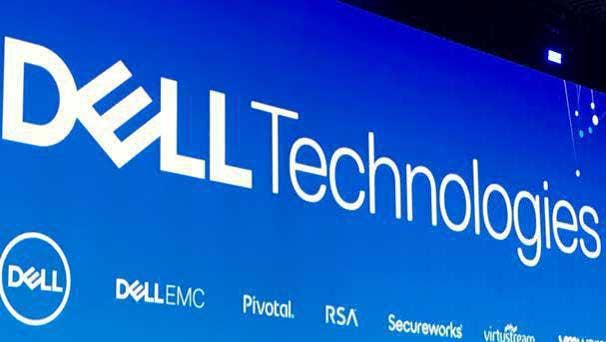The 10 Biggest News Stories Of 2021 (So Far)
While the COVID-19 pandemic and its repercussions have continued into 2021, the biggest news stories this year include major cybersecurity attacks, leadership changes at major IT vendors, and accelerating industry trends such as as-a-service and cloud market adoption.

Turbulent 2021
See the latest entry: The Biggest News Stories of 2022
Last year the COVID-19 pandemic and its economic disruption – including the impact on the IT industry and IT channel – was far and away the big story of the year.
This year, while repercussions from the pandemic are still being felt – the continuing chip shortage being a prime example – many of the IT industry’s biggest news stories in 2021 (so far) are more akin to those seen in previous years as the industry rapidly develops and industry players race to keep pace.
Major trends remaking the IT industry and the channel include the shift to as-a-service IT consumption and the rapid rise of cloud marketplaces as a key component of IT vendor and solution provider go-to-market strategies. And industry consolidation is always at work – this year the IT distribution landscape is particularly being transformed by mergers and acquisitions.
Many of the biggest news stories in the first half of 2021 involved leadership changes at some of the industry’s biggest companies, efforts to change the direction (and fortunes) of leading IT companies – and, in some cases, a combination of the two.
But the rising threat of cyberattacks against businesses, government agencies and IT companies, as so clearly seen in two of the biggest cyberattacks ever, is clearly this year’s biggest – and still developing – news story.
Here’s our look at the top 10 news stories of 2021 (so far). Take a look and see if you agree with our choices.
( And if you want to see how many of these stories made the year-end list, click here).

10. Dell Set To Spin Off VMware In Q4
It’s been just over one year since Dell Technologies confirmed that it was in the early stages of exploring a potential spin-off of virtualization technology leader VMware in which Dell holds a majority ownership stake.
This is the year it really happens. In April of this year Dell unveiled a plan to spin off its 81 percent stake in VMware sometime during the fourth quarter of this year.
The move will create two standalone companies while attempting to preserve the close partnership between the two. CEO Michael Dell said in a statement that the spin-off will “drive additional growth opportunities” for the two companies and “unlock significant value for stakeholders.”
For Dell, the spin-off will simplify and strengthen its capital structure, help the company achieve an investment-grade credit rating and provide Dell with funding to reduce its core debt stemming from its $67 billion acquisition of EMC in 2016. VMware will pay a special cash dividend of between $11.5 billion and $12.0 billion to shareholders – including around $9.5 billion for Dell Technologies. Michael Dell himself will own 41 percent of VMware.
Dell and VMware have signed a five-year commercial agreement to keep their technology innovation and sales synergies intact.

9. Jassy Takes Charge Of Amazon, Selipsky Takes Charge Of AWS
Amazon Web Services has become one of the IT industry’s most powerful companies, serving as the operating platform for a huge number of vendors in the cloud computing space, as well as providing its own cloud storage, analytics, database and business application services.
So the industry took notice in February when Amazon announced that founder and CEO Jeff Bezos would step aside from the day-to-day running of the company and that Andy Jassy (pictured), who has led AWS since its 2003 inception, would replace him as Amazon president and CEO. (The transition took place on July 5.)
Amazon announced in March that it had hired Tableau Software CEO Adam Selipsky to take over as AWS CEO. Selipsky, Tableau’s CEO for about five years, previously worked at AWS as vice president of marketing, sales and support. Selipsky officially started at AWS on May 17 and worked with Jassy until he moved into his new post.

8. The Continued Shift To As-A-Service
The move by IT vendors to offer their products on an as-a-service basis has been gaining momentum in recent years. But in the first half of 2021, with major announcements from Dell Technologies and Cisco Systems, the practice has really taken off.
Most notable was Dell’s announcement of the general availability of its Apex portfolio of as-a-service offerings, including Apex Data Storage Services, Apex Cloud Services and Apex Custom Solutions. Dell says Apex offers rapid hybrid-cloud deployment – in as little as 14 days – and lower costs.
Seen as a way to compete with cloud giants like Amazon Web Services, as well as traditional rivals like Hewlett Packard Enterprise with their own as-a-service offerings, Dell plans to eventually sell all of its products using a consumption-based, as-a-service model.
In 2020 Cisco executives promised over time to deliver the majority of its portfolio “as a service.” This year, at the Cisco Live event in April, the company made good on that promise with the debut of Cisco Plus, a way for customers to purchase – and partners to sell – Cisco products in a flexible, consumption-based manner. The first as-a-service offerings covered networking and hybrid cloud.
HPE, which has pioneered the as-a-service space with its GreenLake portfolio, continued to build on its lead with innovative additions such as the GreenLake Lighthouse platform that provides multiple cloud services on demand, Project Aurora zero trust security, and a new data storage service subscription model.
On July 1 HPE announced a deal to acquire Zerto, a cloud data management and storage protection service provider, for $374 million in a move that will expand GreenLake’s storage-as-a-service offerings.

7. Cloud Marketplaces On The Rise
“AWS Marketplace is such an important channel for our partners now,” said Doug Yeum, AWS worldwide channel and alliances head, speaking during The Channel Company’s Best of Breed Virtual Event Series in January.
While Yeum was obviously speaking about AWS, he might as well have been referring to the entire IT channel. In a trend that’s been building in recent years and accelerating in 2021, cloud marketplaces are becoming the way that vendors and solution providers promote and deliver their software and services.
AWS itself has been a leader here. In December, for example, AWS began allowing partners to quote and bill professional services directly through the AWS marketplace digital catalog of ISV offerings. In January AWS enabled customers to create multiple Private Marketplace catalogs of approved software. And in May Stephen Orban, the new AWS Marketplace general manager, promised more private marketplace innovation, additional industry-specific solutions, improved governance and international expansion for AWS Marketplace this year.
Online marketplaces are quickly becoming the way major distributors move software through the channel to end-customers. TechData’s StreamOne cloud marketplace, bolstered by its Cloud Practice Builder and Click-to-Run Solutions, is gaining momentum while Synnex has bet big on its own Stellr marketplace platform. (The two distributors are in the process of merging.) And Ingram Micro Cloud has become more than the distributor’s vehicle for transacting business: The platform is the core of its partner ecosystem with an API that partners use to connect their eCommerce, CRM, ERP and billing systems.
Microsoft, meanwhile, drew applause from partners in July when the company announced it was cutting its commercial marketplace fees from 20 percent of transactions to 3 percent.
In March Hewlett Packard Enterprise launched an initiative to make its GreenLake as-a-service offerings available through distributor cloud marketplaces, striking deals with Ingram Micro, Tech Data, Synnex and Arrow.

6. Disrupting The Distribution Landscape
Distributors play a major role in the functioning of the channel, so any change there is big news.
In March Tech Data and Synnex announced a $7.2 billion deal to merge and create the world’s largest IT distributor with annual sales of $57 billion, 150,000 customers and 22,000 employees. Synnex shareholders approved the merger in June and the deal is expected to be completed by the end of this year.
Tech Data was itself just acquired by private equity firm Apollo Global Management in June 2020 for about $6 billion. Tech Data CEO Rich Hume will lead the newly combined company while Synnex President and CEO Dennis Polk will be executive chairman of the new company’s board.
Once the Synnex-Tech Data merger is completed, the new entity will be larger than Ingram Micro, currently the IT industry’s largest distributor.
Ingram, meanwhile, was acquired on July 7 by private equity powerhouse Platinum Equity for $7.2 billion, ending four years of ownership by HNA Group, a massive Chinese conglomerate. The deal, disclosed in December 2020, came a little more than five years after the Chinese company bought the distributor for about $6 billion in December 2016.
The big changes among the major distributors were only part of a wave of consolidation sweeping through the channel in the first half of 2021.
In January, for example, Computer Design & Integration acquired fellow solution provider High Availability to scale its business and expand its service offerings. In April Converge Technology Solutions bought Dasher Technologies – Converge’s 19th acquisition in just three years. NWN acquired Carousel Industries in May, bringing together two Cisco Gold partners to create a $1 billion cloud communications powerhouse.
And in June systems integration giant Accenture bough Sweden-based Sentor, a cybersecurity services provider – Accenture’s 40th acquisition in just 10 months.

5. IBM Overhaul: Krishna Accelerates Big Blue’s Transformation
Shortly after taking over as IBM CEO in April 2020, Arvind Krishna outlined his vision for transforming the company into a leading provider of hybrid cloud and artificial intelligence technologies and services. In 2021 the plans to make that vision a reality have continued to take shape and even accelerate.
Most notable have been some of the biggest changes in IBM’s go-to-market model in three decades including the launch of a new, simplified sales structure with a renewed emphasis on partners.
Krishna also engineered a series of acquisitions in late 2020 and this year to speed IBM’s transformation including buying AIOps vendor Turbonomic, DevOps consultant BoxBoat Technologies, and hybrid cloud consultants Taos and Bluetab Solutions Group.
IBM’s plans to spin off its Global Technology Services unit have accelerated in the first half of 2021. Kyndryl, as the managed infrastructure services company will be called, is scheduled to launch by the end of the year.
IBM veteran Martin Schroeter has been named Kyndryl CEO while former State Street Corp. CIO Antoine Shagoury has been tapped to serve as the new company’s CTO. And in July IBM announced the operating model for Kyndryl and its six global managed services practices: cloud, digital workplace, security and resiliency, network and edge, core enterprise and zCloud, and applications.
The year for IBM has had its hiccups, however, most notably the unexpected departure of IBM President Jim Whitehurst on July 2. Partners worried that The exit of Whitehurst, Red Hat’s CEO prior to its acquisition by IBM, could hinder efforts to operationally integrate the two companies.

4. Intel Hires Gelsinger As CEO, Comeback Plans Developed
Intel has lost momentum in recent years. Stumbles with its 10-nanometer and 7-nanometer manufacturing processes have set the company back just as a resurgent AMD has hit its competitive stride.
One of the IT industry’s biggest news stories this year (so far) is the hiring of VMware CEO and 30-year Intel veteran Pat Gelsinger (pictured) as the chipmaker’s new CEO, replacing Bob Swain who served in the top job for just two years. The announcement of the leadership change came Jan. 13.
Since starting in the job Feb. 15, Gelsinger has unveiled plans to restore Intel’s momentum and unleashed a wave of changes with the goal of returning Intel to “unquestioned leadership” in the semiconductor industry.
Topping the list is Intel’s game-changing IDM 2.0 strategy that’s intended to expand the company’s manufacturing capacity and dramatically change the way it makes processors. The plan includes building new manufacturing fabrication plants (including investing $20 billion in two new fabs in Arizona and $3.5 billion to upgrade a New Mexico site), expanding the use of external foundries like TSMC, and launching Intel’s own foundry service business to manufacture chips designed by other companies.
Intel has instituted a major internal restructuring, merging its manufacturing and operations group and Global Supply chain group into a new organization called Manufacturing, Supply Chain and Operations – a move characterized as instrumental to the IDM 2.0 strategy.
The company also split the Data Platform Group into a Data Center and AI Group and a Network and Edge Group. It also created new Corporate Planning, Software and Advanced Technology, and Accelerated Computing Systems and Graphics business units.
There have been major personnel changes as well. Navin Shenoy, Intel’s top data center executive, left the company on July 7 as part the restructuring. In January veteran Intel engineer Sunil Shenoy, who left the company in 2014, returned as senior vice president and general manager of the Design Engineering organization. And in July Gelsinger rehired 28-year Intel veteran Shlomit Weiss, one of the key engineers behind the company’s dual-core and SkyLake CPUs.

3. The Global Chip Shortage Wreaks Havoc On Multiple Industries
Semiconductors are a key component in everything from consumer electronics and appliances to automobiles and IT systems. The global chip shortage that began in 2020 and continued into this year has impacted a wide range of industries and companies.
Why the shortage? Some chip manufacturing facilities shut down as the COVID-19 pandemic took hold. Former President Trump’s trade war with China barred companies from making chips there. And with microprocessors being built into so many products, demand has soared even as semiconductor companies compete for capacity at contract manufacturers like Taiwan’s TSMC.
The shortage has hit IT system and device makers and the channel partners who sell their products. During a recent earnings call Apple executives warned that the chip shortage could constrain iPhone and iPad sales in the September quarter: CEO Tim Cook said the most pronounced shortages were in chips for routine functions like powering mobile displays and decoding audio, according to a CNBC story.
In July Intel warned that chip supply shortages will continue for several quarters with the CPU shortage for PCs worsening in the third quarter. The semiconductor giant said it might be one to two years before the industry is able to completely catch up with demand. But Intel also said it is not passing along to partners and customers some of the increased costs the company is seeing in its supply chain.
In February U.S. President Joe Biden issued an executive order to review semiconductor industry supply chains and IT technologies. In June the U.S. Senate approved $52 billion in spending for domestic semiconductor manufacturing and research.

2. The SolarWinds Hack
In early December 2020 cybersecurity company FireEye reported that it had been hacked, apparently in a state-sponsored attack. CEO Kevin Mandia, noting the sophistication of the attackers’ capabilities, presciently said that: “This attack is different from the tens of thousands of incidents we have responded to throughout the years.”
Over the next few weeks investigators would discover that the hack of FireEye’s systems was part of a very extensive and very sophisticated cyberattack that used malware embedded within SolarWinds’ widely used Orion network monitoring software.
The fallout from the attack continued through the end of 2020 and well into this year as its scope became clear. The list of targets grew to include government agencies – including the Department of Defense, the Department of Homeland Security, the Department of State and the Department of Justice – as well as some 100 private sector companies including Microsoft and other leading IT vendors.
In January a number of cybersecurity vendors disclosed that sophisticated hackers had attacked their internal systems, compromised their certificates or attempted to access their email – with many of the attacks linked to the SolarWinds attack. A Mimecast breach in January was linked to the SolarWinds incident. And there has been a lot of finger-pointing this year between IT vendors over their responses to the incident.
Investigators have accused the Russian intelligence service APT29 of being behind the attack. Russia denies having anything to do with it.

1. The Ransomware Attack ‘Cyber-Pandemic’
Global systems integrator and consulting firm Accenture confirmed this week that it was the victim of a ransomware attack, launched by a hacker group using a strain of ransomware called LockBit and reportedly threatening to release company data and sell insider information.
Accenture said the attack had no impact on the company, saying it had successfully identified and contained the attack and isolated the affected servers. But the hackers, in a Dark Web posting, ominously said: “If you’re interested in buying some databases, reach us.”
The attack on Accenture was just the latest in a growing wave of ransomware attacks – and what’s become the biggest news story of 2021, so far.
On July 2 IT service management vendor Kaseya took all SaaS instances of its VSA remote monitoring and management tool offline, citing a “potential attack” against some VSA customers. The company also posted a notice on its website recommending that customers immediately shut down their VSA servers.
That was the beginning of what would prove to be one of the biggest ransomware attacks in years. The REvil gang, exploiting a vulnerability in the on-premises VSA software, compromised some 50 MSPs and encrypted end-customers’ data. The attackers demanded ransom payments from more than 1,000 victims, $50,000 from smaller companies and $5 million from larger ones – $70 million in total.
The attack put additional focus on the growing threat of ransomware. Ransomware caught the attention of the general public in early May when a ransomware attack against Colonial Pipeline resulted in gas shortages in the Southeast. Ransomware hacks have been increasing over the last several years with attacks against IT systems operated by hospitals and county and local governments.
Closer to the channel, ransomware attacks have been launched against solution providers, systems integrators and managed service providers – the latter against remote monitoring and management tools like Kaseya’s VSA.
Kaseya VSA remained offline for about 10 days, causing disruption for MSPs and their clients and eliciting an apology from CEO Fred Voccola. The company issued a patch and restarted its servers on July 12. But the blowback has continued with reports that the company had warnings about the VSA vulnerability and reports that Kaseya employees had warned management of the potential danger.